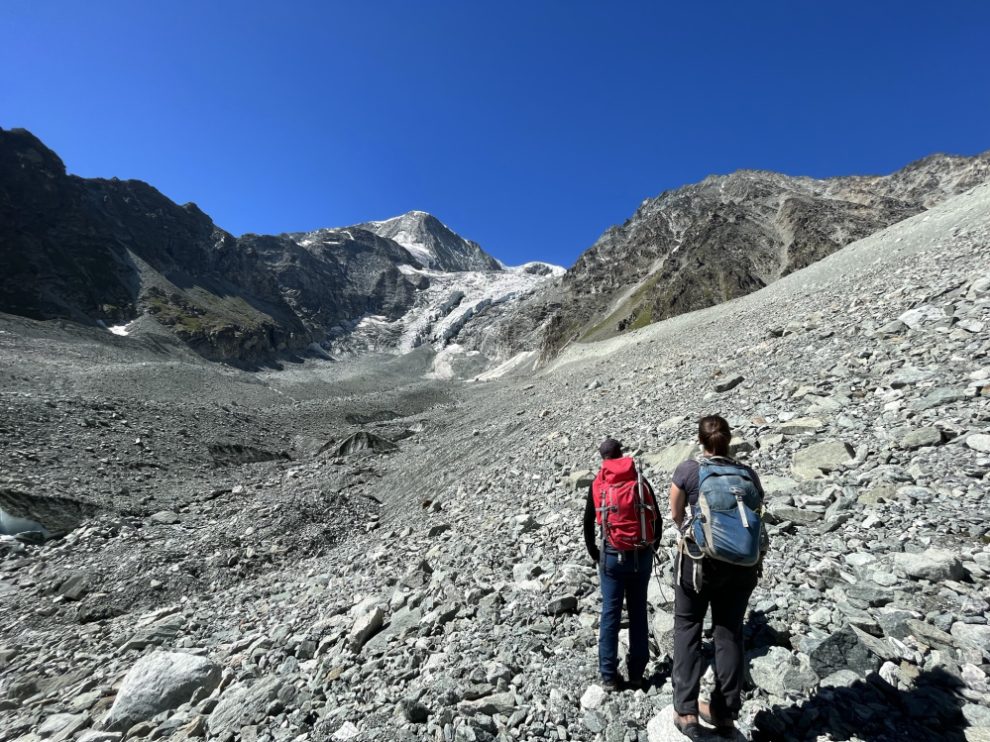SCIENTISTS are investigating the increase in rock cover on glaciers that can affect the speed they melt as the climate changes.
Most mountain glaciers have lost large volumes of ice over the 20th and 21st centuries. Six per cent of the ice in the Swiss Alps melted in the last year alone, and Alpine glaciers are predicted to be some of the first in the world to disappear because of climate change.
At the same time, the proportion of rock debris covering the surface of these glaciers has increased. It now covers around 11% of the world’s mountain glaciers.
Glaciers with this rubble covering them respond differently to climate change compared to so-called ‘clean’ ice glaciers. Thick layers of it are thought to slow the melting of glaciers while thinner coverings are believed to accelerate it.
A team of academics at Aberystwyth University is researching why this happens at Glacier de Tsijiore Nouve in Switzerland. They will measure the thickness of the debris across the glacier, record its properties and map how the rock cover reaches the surface. The aim is to then expand the work to more glaciers in the European Alps to help understand how similar the response to climate change is across the region.
Swiss and similar mountain glaciers globally are very important sources of water and hydroelectric power for the local population and rapid ice loss is also a flood risk. So understanding the influence of debris cover on how rapidly glaciers melt is very important.
The study is led by a team of researchers from the Department of Geography and Earth Sciences at Aberystwyth University, including Dr Marie Busfield, Dr Tom Holt, and Dr Morgan Jones. Dr Busfield notes:
“Understanding the long-term evolution of the rock cover is important as these glaciers respond differently to climate change compared to clean ice glaciers as the debris acts like a blanket, insulating ice underneath from the elements. Ski resorts in the Swiss Alps for example already make use of the basic principle by putting blankets over glaciers by ski slopes, which can slow down how fast they melt, but not stop it. However, specific drivers of how the increase in debris happens are poorly understood. Our research aims to come up with a model for how this rapid accumulation on small Alpine glaciers occurs.
“Swiss glaciers are ideal candidates for this long-term analysis of debris-cover evolution because of the extensive glacier monitoring and availability of historical aerial photos. Aerial imagery from the 1940s to the present shows a notable increase in surface debris alongside prolonged ice loss at Glacier de Tsijiore Nouve. This provides us with a rare opportunity to examine debris-cover change over a period that has been well-documented and is concurrent with recent climatic changes. Following our initial explorations of the glacier structure last year, our research is now focusing on better understanding processes driving debris accumulation and long-term evolution of the debris layer.”
The Aberystwyth University research is funded by the Quaternary Research Association and the British Society for Geomorphology.


















